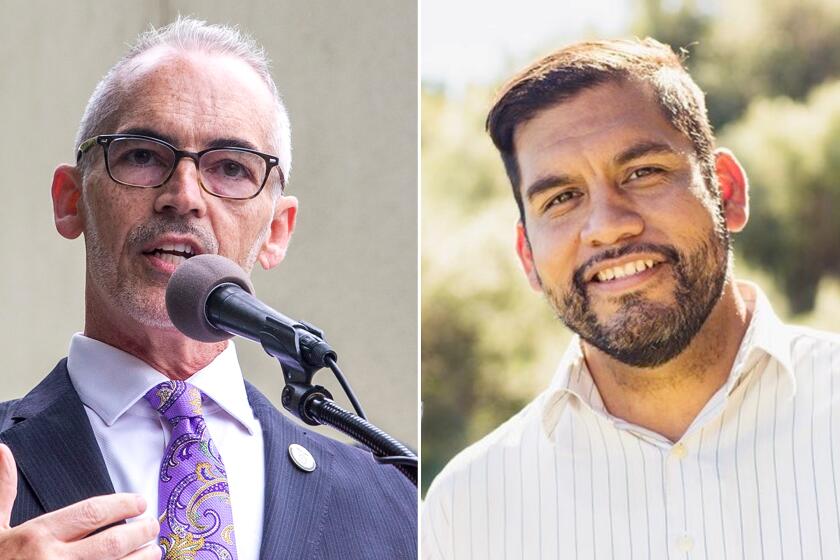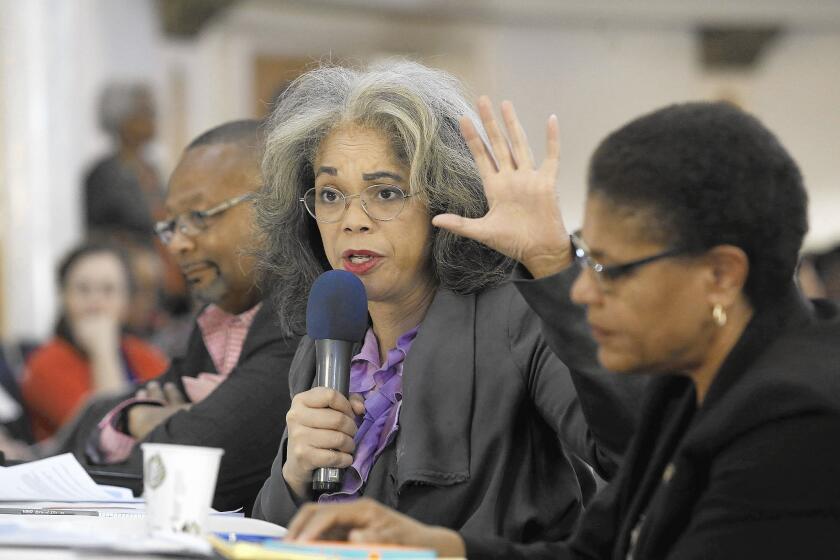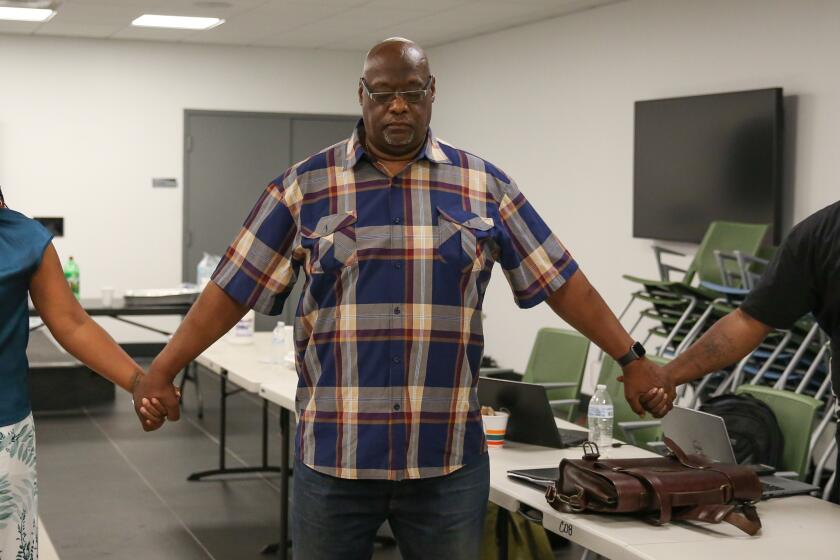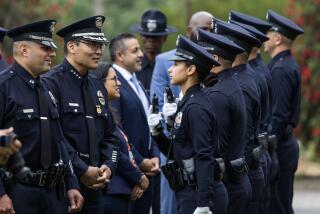Op-Ed: The biggest bang for L.A.’s crime-and-safety buck
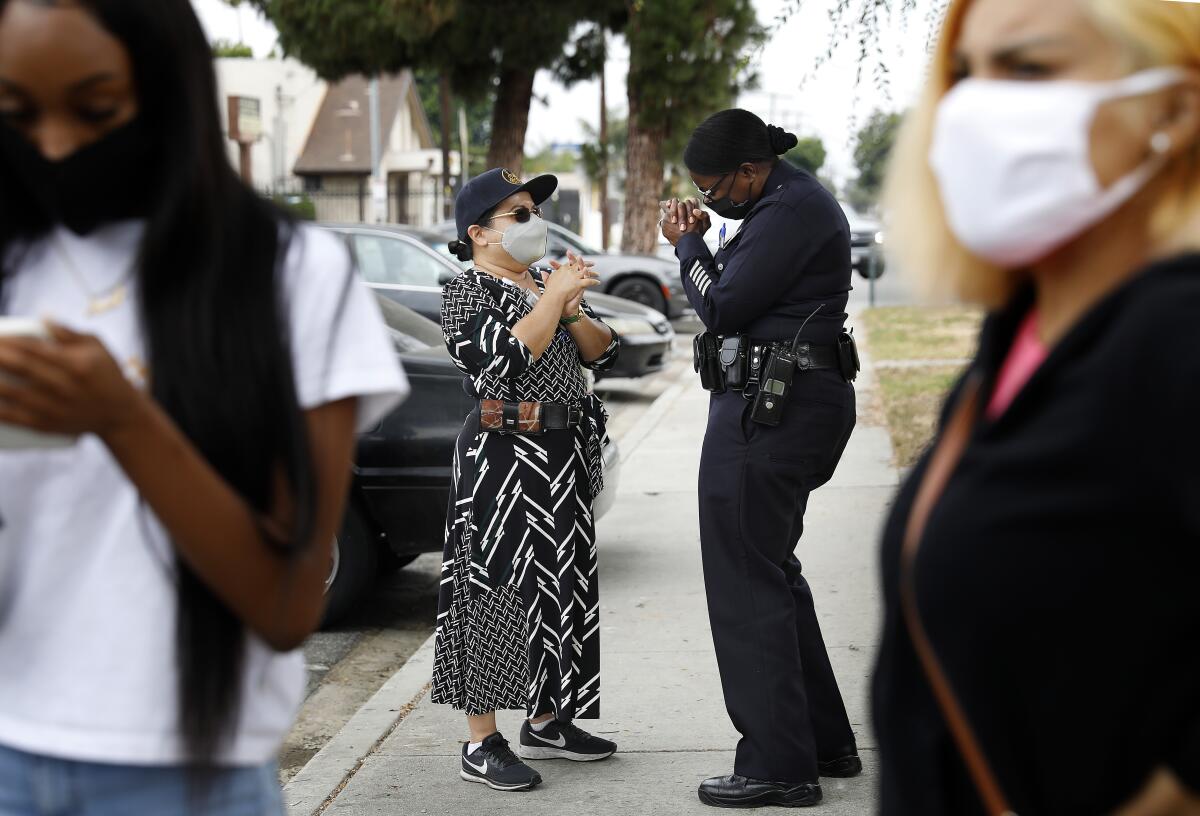
- Share via
With Rolexes being snatched off wealthy wrists in broad daylight, politicians of every stripe raced in the recent elections to reassure anxious voters with pledges to hire more police. If only it were that simple.
Police numbers matter, up to a point. For temporary street crime drops in the relatively safe areas where wristwatch snatches happen, more police presence works. But what matters far more to everyone’s long-term safety are sustained violence reductions and increased safety in the “hot zones” — chronically high crime poverty areas.
Former Los Angeles Police Department Chief William J. Bratton warned about failing to focus on these hot zones when he said, in his “Plan of Action” for the LAPD, that too many Angelenos “in ‘safe’ neighborhoods … mistakenly believe [violence] … can be contained to certain sections of the city.”
Just adding cops increases hot zone containment, but it does nothing for hot zone safety. That takes much smarter coalition strategies and investment.
Whoever wins the Nov. 8 city election could have a major say on police spending. They could also draw a tougher line on salary talks with the LAPD union.
New York University economists measured the effects of enlarging the police force in 242 cities between 1981 and 2018, and from that data they calculated that the average city would have to hire between 10 and 17 new police officers at a cost of $1.3 million to $2.2 million to save one life a year and reduce other serious crime.
NYU researcher Morgan Williams cautioned in a National Public Radio interview that adding officers gave “good bang for the buck” in average-size cities with lower Black populations. But for big cities with the largest African American populations, adding police failed to decrease the homicide rate and increased Black arrest rates for minor crimes.
Williams concluded: “We’re getting plenty of policing, but it might not always be the type of policing that keeps people safe.”
Especially in poor, high-crime neighborhoods.
To increase safety where most violent crime happens it takes well-funded coalitions carrying out strategies that go way beyond “hook and book” suppression. When done properly, these “all hands on deck” alternatives to paramilitary policing deploy teams of specially trained neighborhood residents and gang intervention and prevention experts in a coordinated effort that includes government, local institutions, nonprofits, schools and police. Together, they seek trauma and violence reduction, build trusted partnerships and create healthier neighborhood conditions that stabilize violence and solve problems that generate crime.
This “root causes’’ approach has a much bigger positive effect than simply adding more police.
The LAPD’s Community Safety Partnership provides a model for the kind of policing ethos we need.
Teams of researchers at Cal State LA, USC and UCLA evaluated aspects of holistic strategies in Los Angeles and found that, in their defined areas of operation, they had a measurable impact.
Professional gang interventionists, who cost a fraction of police, worked with community members and specially trained officers to achieve a 97% drop in retaliatory gang shootings over a two-year period and a 77% drop in retaliatory gang aggravated assaults. The researchers estimated that 185 violent gang crimes were prevented over that two-year period, with a citywide savings of $110 million.
In another study, professional gang prevention services were found to reduce participants’ risk of joining a gang by 83% and reduced antisocial tendencies by 71%.
And yet another study, which looked at data over six years and conducted qualitative research as well, found that LAPD’s specially trained Community Safety Partnership officers, with civilian and other government colleagues, saved the city more than $90 million in tangible and intangible costs at just two CSP sites. The teams also improved residents’ feelings of safety, increased resident-officer trust, achieved steeper crime declines compared with other neighborhoods, and prevented violent crime from spreading, the data showed. And these gains were made with fewer arrests and less police use of force compared with non-CSP sites.
Notably, these CSP successes have continued during the pandemic amid nationwide increases in violent crime. According to LAPD Deputy Chief Emada Tingirides, head of the Community Safety Partnership Bureau, as of Nov. 26, data from all 10 partnership sites shows that residents and police achieved reductions of 75% in homicides and 10.8% in aggravated assaults in 2022.
These holistic strategies aren’t perfect and they aren’t easy or cheap to implement in traditional, enforcer-culture police departments. But the return on investment exceeds the costs, and collaborative efforts can finally deliver what the Christopher Commission, organized in the aftermath of the Rodney King beating, demanded more than 30 years ago for Los Angeles: real community policing.
Gang interventionists have long been on the front lines of Los Angeles’ fight against gang violence. Amid renewed interest in their trade since the murder of George Floyd, they are recognizing the mental health impact of their jobs — and are seeking help.
The size of a police force is not irrelevant to crime reduction, but we will get more bang for the buck if we expand by spending our dollars on neighborhood teams of community partners, CSP-trained officers and experts who can execute holistic safety plans in hot zones. New recruits must be carefully screened to weed out bias, political extremism and those who lack the humanist temperament for coalition- and community-based policing, and veteran officers have to shed their resistance to change and their reluctance to share control.
As we add officers to the LAPD, let’s fortify the department’s commitment to public trust, revitalize its reform efforts and concentrate our investment in Community Safety Partnership teams.
We know what works. We just have to fully commit to it.
Connie Rice, a former member of President Obama’s Task Force on 21st Century Policing, is a civil rights attorney and author of “Power Concedes Nothing.”
More to Read
A cure for the common opinion
Get thought-provoking perspectives with our weekly newsletter.
You may occasionally receive promotional content from the Los Angeles Times.
